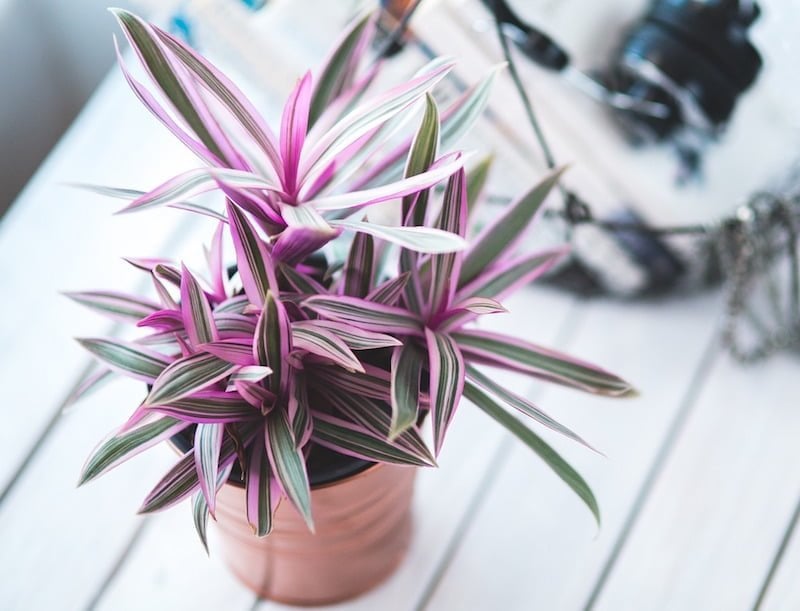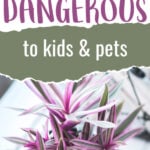10 Indoor Plants That Can Be Dangerous to Kids and Pets
Indoor plants can beautify your home, bring a bit of nature to your interior space, and purify the air. But some house plants can be dangerous to kids and pets.
Many tropical or exotic plants can be dangerous if ingested. And those that aren’t harmful if accidentally ingested could still cause a skin reaction in a child or pet with a sensitivity.
House Plants That Can Be Harmful to Humans and Pets
Keep reading to learn about ten plants that can be harmful to the humans and pets in your home.
1. Philodendron
A plant that grows natively in tropical American climates, philodendron is a popular indoor plant due to its pretty heart-shaped leaves. You can also grow it from seed, or repot it into a container you use inside the house. However, it is mildly toxic to both children and pets.
2. Oleander
This indoor/outdoor flowering plant needs at least half a day of direct sunlight in order to bloom, and it doesn’t tolerate the cold very well. Due to those characteristics, some experts recommend bringing the oleander inside, especially during the winter.
However, the leaves and flowers are both extremely toxic to humans and animals (source). Because reactions following ingestion can vary greatly, it’s essential to seek medical attention promptly.
3. Amaryllis
The Amaryllis plant comes from South Africa and contains a poisonous irritant called lycorine. It is present in the bulb and must be eaten in large amounts to cause adverse reactions. Such symptoms include diarrhea and vomiting. If you have one of these plants and it’s already flowering so the bulb is not as accessible to kids and pets, it may be worthwhile to keep around.
4. Devil’s Trumpet
This plant is easy to grow indoors, but all parts of it are poisonous. The degree of toxicity is so severe, it has been used in suicides and murders. The plant is beloved due to its distinctive flowers that become up to six inches long. Due to the inherent danger of this plant, though, you may want to keep it out of the house.
5. Crown of Thorns
Interestingly, this plant has many associations with Jesus Christ, and by its name, you may be led to believe it was used during the crucifixion. However, the Crown of Thorns is native to Madagascar, and wasn’t known in biblical times.
It has caustic and irritating chemicals that cause problems like abdominal pain, mouth irritation and vomiting. Be sure to keep kids and pets from coming in contact with the leaves and flowers.
6. Peace Lily
This plant has calcium oxalate crystals that damage tissue once ingested. Swelling of the airway can result afterwards, along with mouth pain. Although this houseplant is very familiar, it’s a good idea to look for safer alternatives to prevent potentially severe consequences.
7. Dumb Cane or Leopard Lily
Due to its distinctive two-toned green leaves, the Dumb Cane plant is a visually attractive choice. It also helps with air purification. However, if its leaves are ingested, they can cause mouth irritation and speech impediments that persist for several days.
8. Croton
“Are crotons poisonous to humans?” is a very common search term. The croton is a beautiful, humidity-loving houseplant that must be kept out of reach of kids and pets.
Its leaves contain an oily sap that can stain skin and cause severe rashes. This sap can also cause gastrointestinal problems and vomiting if ingested. This applies to humans as well as cats and dogs.
9. Poinsettia
A winter holiday staple, this plant is beloved for its vibrant colors. Red is the most popular variety, but you can also find pink and white versions. The milky sap found in the stems contains chemicals similar to those in household detergents.
If your pet ingests a large amount of poinsettia, drooling is common. They will likely suffer from vomiting or diarrhea. Skin irritation can also occur when in contact with poinsettia sap.
10. Mistletoe
Another plant that’s often found in homes during the holidays, mistletoe has poisonous berries and leaves, due to a component called phoratoxin. The American varieties are less poisonous than those found in Europe, but they can still cause symptoms ranging from blurred vision to stomach discomfort and diarrhea.
Safer, Non-toxic House Plants
Some of the plants on this list are commonly found in many homes. However, if you live with kids and pets, it’s best to look for safer house plants like the following.
- Boston fern
- African violet
- Spider plants
- Parlor palm
- Phalaenopsis Orchids
- Christmas cactus
- Peperomia
For more on bringing nature indoors, find this guide to the best tall houseplants.



